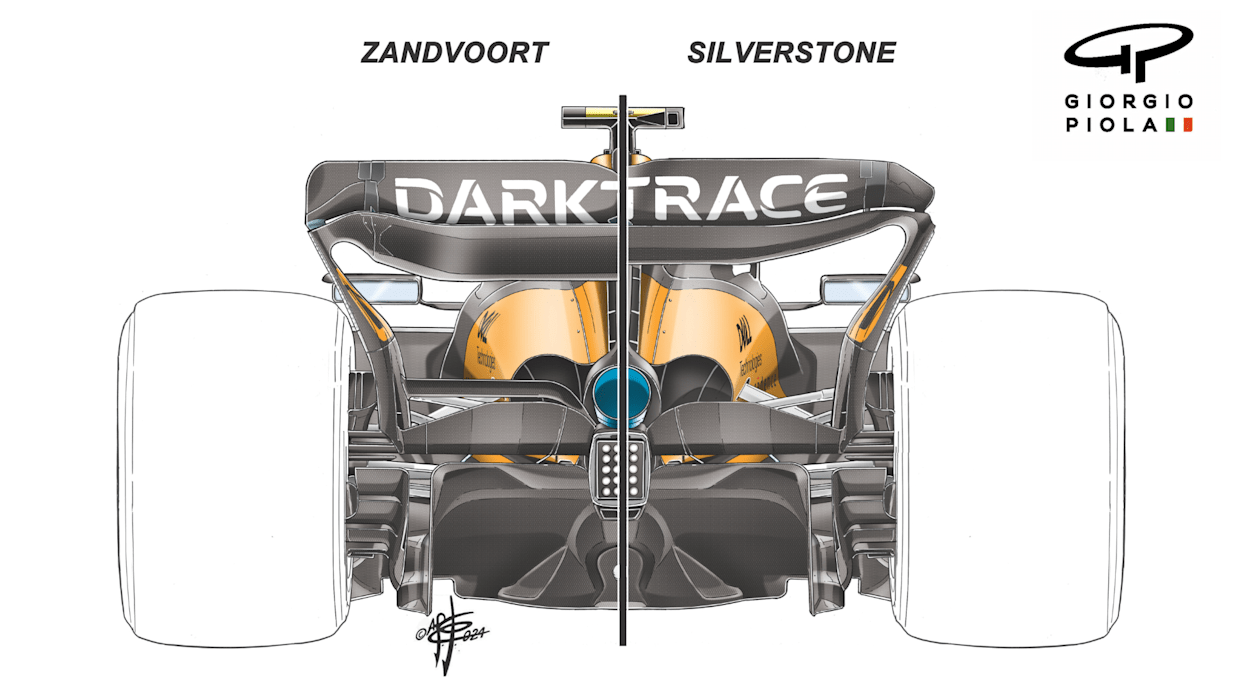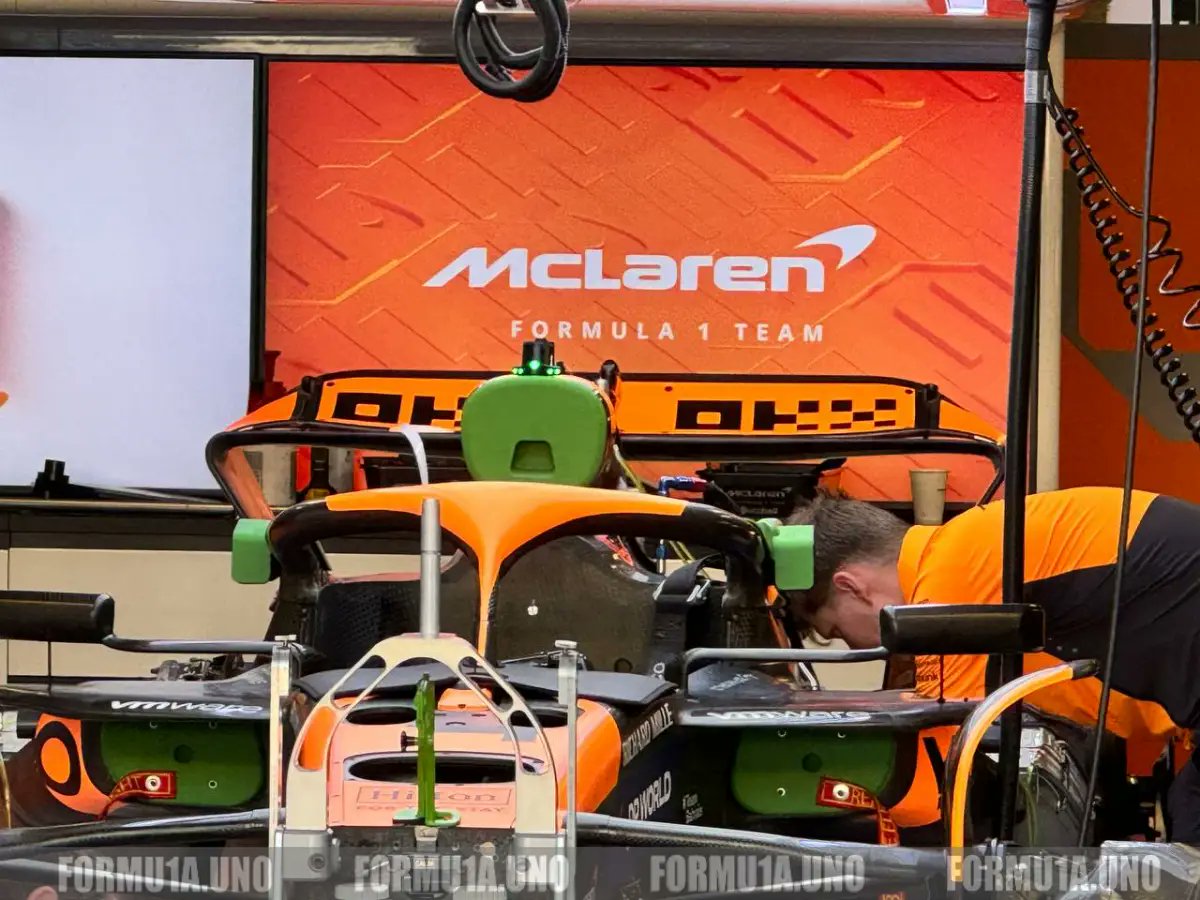F1.com - Upgrades
The main part of the upgrade was a new high-downforce specification of rear wing and beam wing. “This wing gives us general efficiency gains, a bit more downforce, better slow-speed performance and a better DRS gain,” McLaren’s chief designer Rob Marshall explains.
Whereas the previous high-downforce wing flap featured a completely straight trailing edge, this one incorporates the central vee indentation of the lower downforce family. That surrenders only a small amount of total downforce from the section, which is shielded by the DRS mechanism (and so less effective), to give a drag reduction even when not in DRS mode
The wing still features the separate outboard winglet sections which taper the downforce away at the outboard ends for a useful drag reduction. But the downward sweep of the lower part of these winglets is now much more pronounced and appears to integrate more closely with the geometry of the top of the endplates.
The beam wing has been reshaped to feed the airflow in a way appropriate to the reshaped main plane of the main wing.
The downforce and drag of a rear wing are determined by the shape and area of the main plane upper and lower surfaces, the flap design and geometry and how they all interact throughout the speed range.
Balancing out all the compromises inherent in making it more efficient – which has been the whole target of this development – is a hugely complex mathematical challenge taking up a lot of personnel and resource time. That explains the long lead time and the big gap between major upgrades.

The accompanying changes – more efficient front brake ducts, a re-alignment of the brackets on the floor edges, re-aligned sheaths for the front and rear suspension arms – were minor in their effect.





